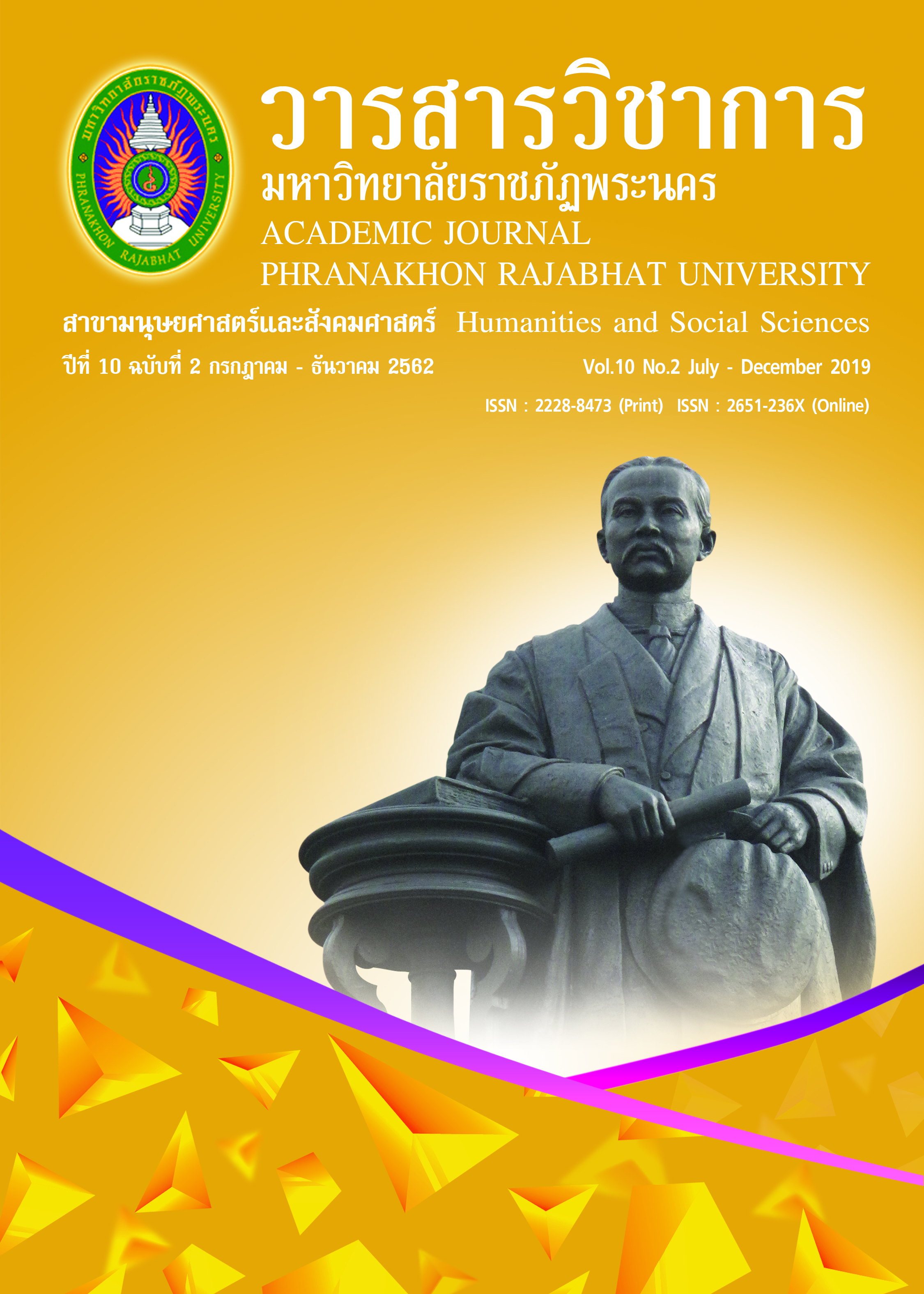THE ADMINISTRATIVE EFFECTIVENESS OF RAJABHAT UNIVERSITIES IN LOCAL DEVELOPMENT
Keywords:
Effectiveness, The Administrative of Rajabhat University, Local DevelopmentAbstract
This research aimed to examine (1) the administrative effectiveness of Rajabhat Universities for local development; analyzes (2) conditions exerting effects on the administrative effectiveness of Rajabhat Universities for local development; and shows (3) the importance of prioritizing dealing with conditions exerting effects on the administrative effectiveness of Rajabhat Universities for local development in addition to analyzing the reasons for this importance. The qualitative research methods were employed to carry out
this research inquiry. As such, this entailed documentary research in addition to carrying out in-depth interviews. Those interviewed were 38 presidents, vice-presidents, assistants to the president, deans, directors of bureaus/institutes/divisions, lecturers, students, and alumni from four Rajabhat Universities. The four universities were Bansomdejchaopraya Rajabhat University, Valaya Alongkorn Rajabhat University under the Royal Patronage, Nakhon Ratchasima Rajabhat University, and Suan Dusit University.Findings are as follows: 1. The administrative effectiveness of Rajabhat Universities for local development consisted of (1) outputs, viz., the production of graduates, research, and academic services; (2) outcomes, viz., graduates using knowledge for local development in addition to research and the provision of knowledge in providing academic services in local development. 2. The conditions exerting effects on the administrative effectiveness of Rajabhat Universities for local development consisted of (1) inputs, viz., students, lecturers, academic
support personnel, and other resources; (2) throughputs, viz., organizational administration, the administration of human resources, and financial administration. 3. The importance of conditions exerting effects on the administrative effectiveness of Rajabhat Universities for local development must be prioritized. The reasons for this importance is analyzed after the following fashion: 3.1 The most important condition was policy (mean = 40.0). Next in descending order were personnel expertise (mean = 13.3); administrators and the target areas for the exercise of responsibility (mean = 10.0). 3.2 The reasons for importance were as follows: (1) Enacting policy is the goal of the university. (2) Personnel expertise leads to producing graduates, research, and academic services which are genuinely responsive to local needs. (3) University administrators must have the following characteristics: having a vision involving awareness of the importance of local development; mobilizing operations for local development; communicating with personnel by transmitting policies and fostering knowledge on the part of university personnel. (4) Target areas must be designated. The designation of areas of responsibility of Rajabhat Universities ensures the non-overlapping of areas of responsibility and ensures that academic services in each area are continuous and sustainable.
References
Badri, M.A., & Abdulla, M.H. (2004). Awards of excellence in institutions of higher education: an AHP approach. International Journal of Educational Management, 18(4), 224-242.
Badri, M.A., Selim, H., Alshare, K., Grandon, E.E., Younis, H., & Abdulla, M. (2006). The baldrige education criteria for performance excellence framework: empirical test and validation. International Journal of Quality & Reliability Management, 23(9), 1118-1157.
Camelia, G., & Marius, P. (2013). Mission statements in higher education: Context analysis and research propositions. Annals of the University of Oradea, Economic Science Series, 22(2), 653-663.
Finley, D. S., Rogers, G., & Galloway, J. R. (2001). Beyond the mission statement: Alternative futures for today’s universities. Journal of Marketing for Higher Education, 10(4), 63-82.
Karakutuk, K. (2006). Yuksekogretimin finansmanı. Milli Egitim Dergisi, 171, 219-242.
Kosmutzky, A. (2012). Between mission and market position: Empirical findings on mission statements of German higher education. Lukman, R., Krajnc,
D., & Glavic, P. (2010). University ranking using research, educational and environmental indicators. Journal of Cleaner Production, 18(7), 619-628.
Morphew, C. C., & Hartley, M. (2006). Mission statements: A thematic analysis of rhetoric across institutional type. The Journal of Higher Education, 77(3), 456-471.
Murias, P., de Miguel, J. C., & Rodríguez, D. (2008). A composite indicator for university quality assesment: The case of Spanish higher education system. Social Indicators Research, 89(1), 129-146.
Neal, J. E. (1995). Overview of policy and practice: Differences and similarities in developing higher education accountability. New Directions for Higher Education, 1995(91), 5-10.
Ozdem, G. (2011). An analysis of the mission and vision statements on the strategic plans of higher education institutions. Kuram Ve Uygulamada Egitim Bilimleri, 11(4), 1887- 1894.
Paina, N., & Bacila, M. F. (2004). Piata educationala-Locul universitatii. Tribuna economica, 5(29), 64-66.
Sonmez, V. (2003). Yuksek ogretimin yeniden yapılanması uzerine bir deneme. Egitim Arastırmaları, 12, 4-12.
Taylor, J. (2001). Improving performance indicators in higher education: The academics’
Downloads
Published
How to Cite
Issue
Section
License
"บทความวิชาการในวารสารฉบับนี้ ถือเป็นความรับผิดชอบของผู้เขียนเท่านั้น"
สงวนลิขสิทธิ์ตามพระราชบัญญัติลิขสิทธิ์




